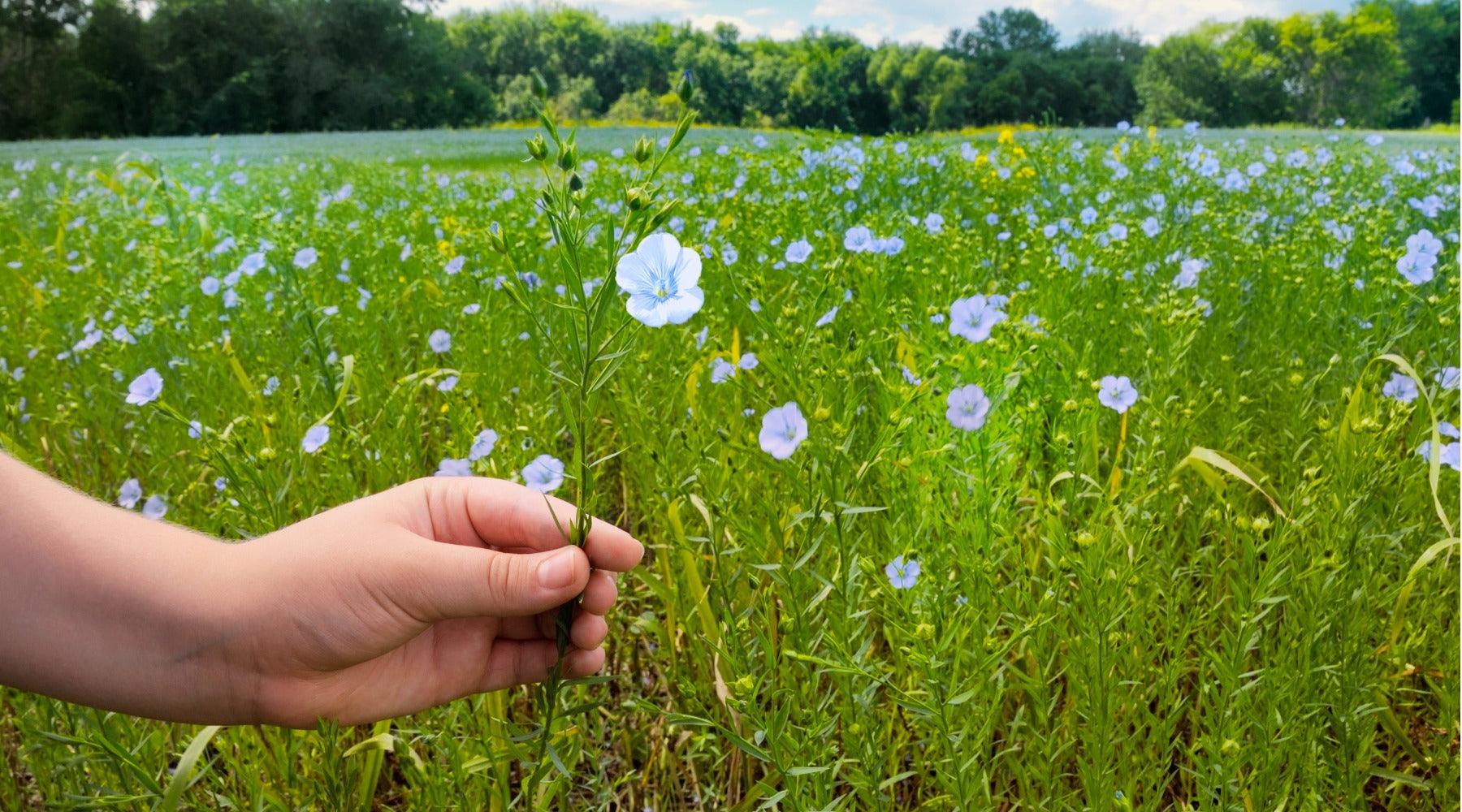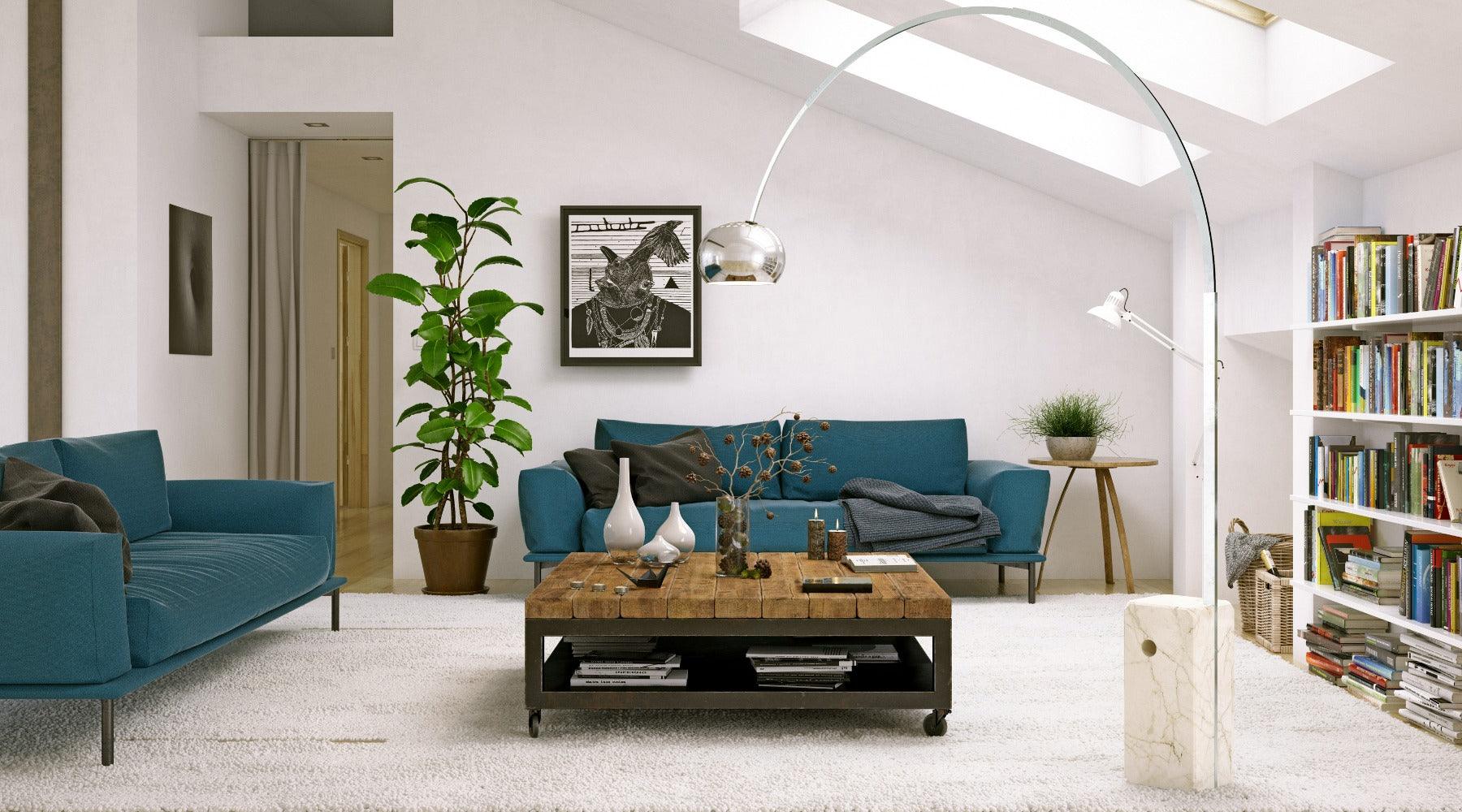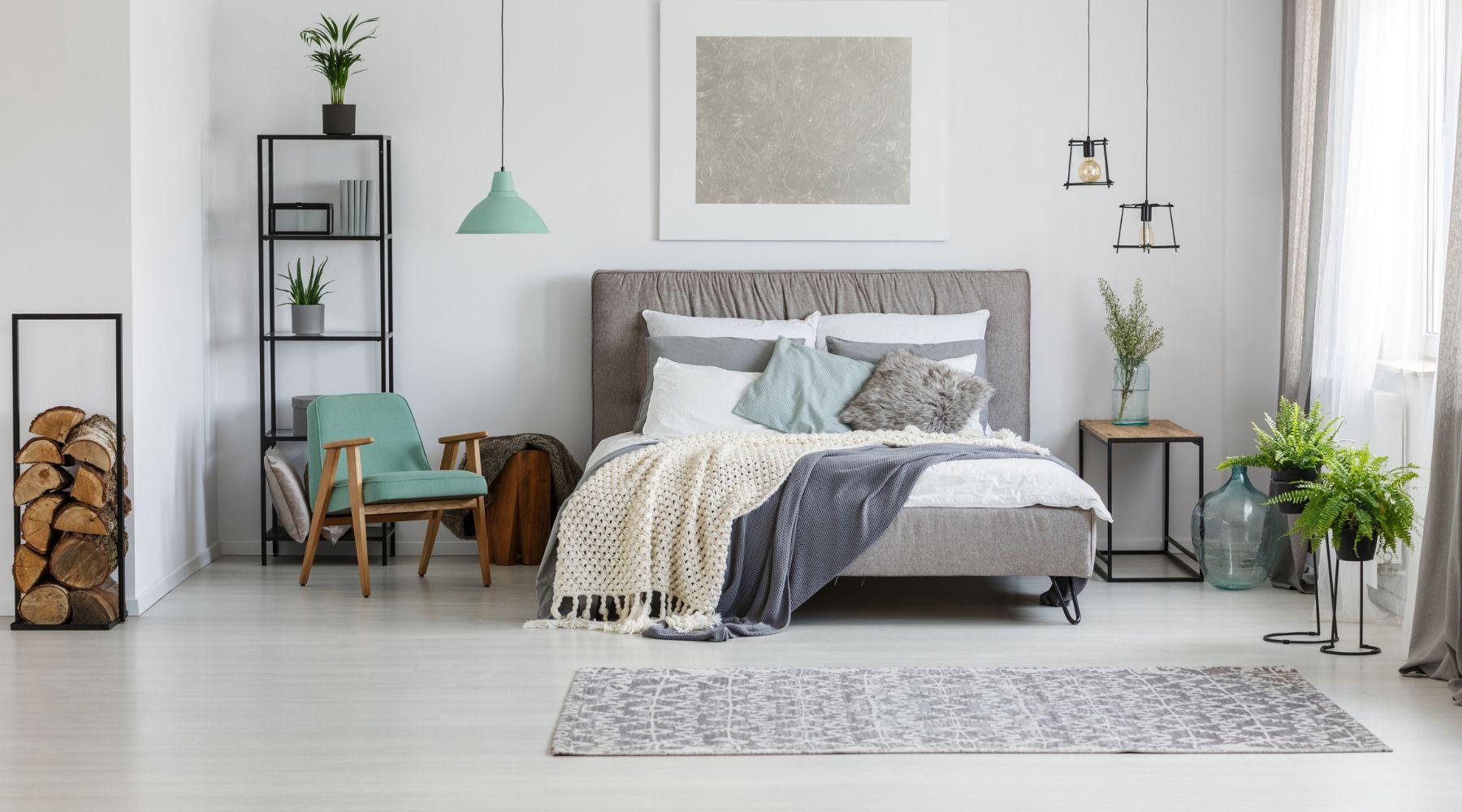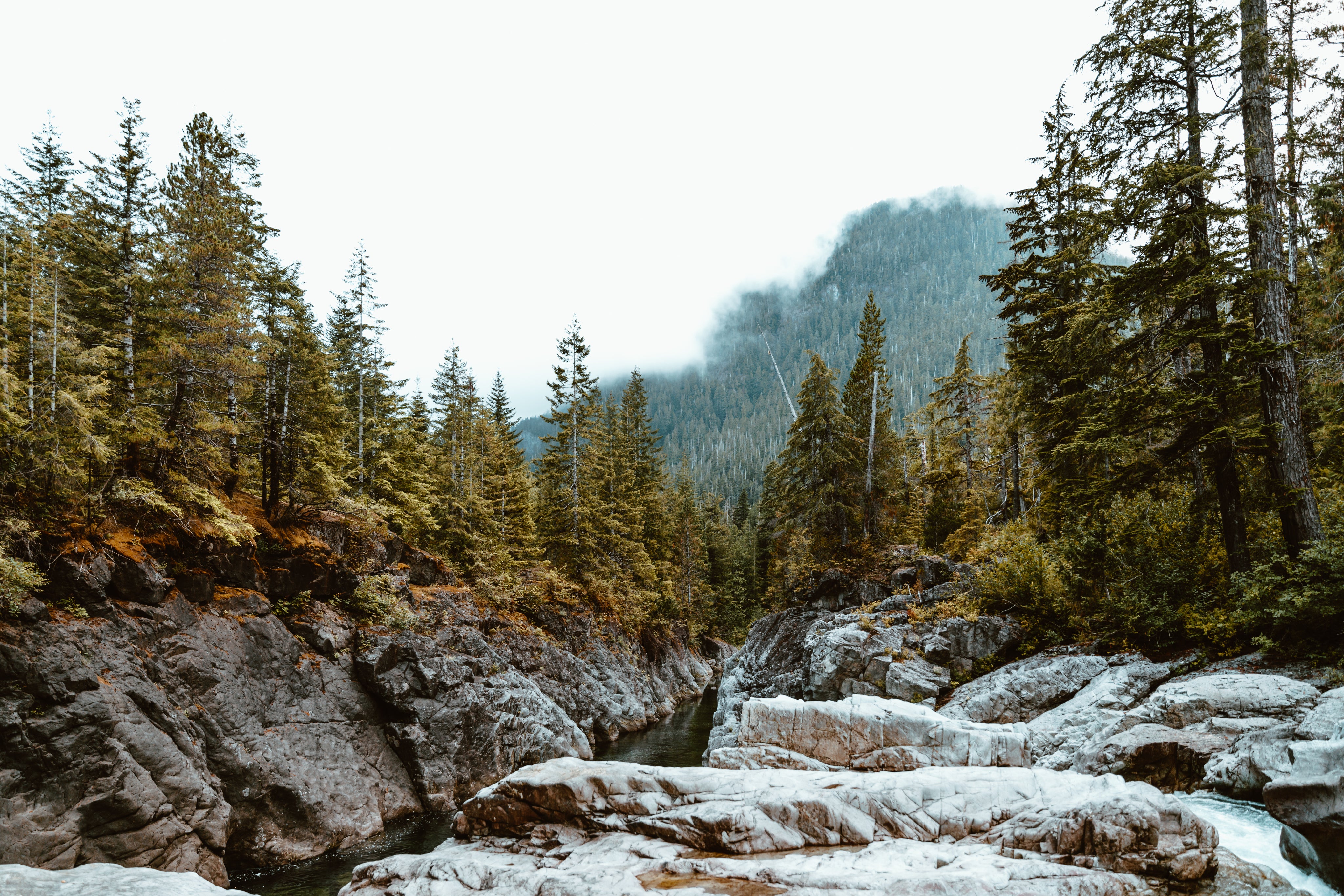
Is Linen a Natural Material?
The word "natural" is often used by companies to promote sales—but in linen's case, it's actually true. Find out more about the flax plant, where it's grown, and how organic linen is produced without artificial irrigation or chemicals.
What is Linen Made From?
Our Scandinavian-style duvet covers—and all other linen products—come from the flax plant (Linum usitatissimum). It’s used both for linen and for its seeds, called flaxseed or linseed, which are packed with nutrients, fiber, and heart-healthy omega-3 fats.
Flax plants grown for linen are around 3 to 4 feet in height, with small, pointed leaves. The flowers have a delicate bluish-purple color and usually bloom around June.
Flax stalks are about 0.1 to 0.15-inch in diameter and are notoriously tough, as the bast—the woody inner part of the stem, which is used to make linen—is made from many cells tightly packed together. This makes linen much stronger than cotton, which consists of a single strand of cells.
Flax is harvested by pulling it out of the soil, rather than cutting it. This preserves the length of the strands. Afterwards, it is laid out in the field to be retted, a process by which the hard outer stalk dissolves to leave only the bast fiber.

Where Does Flax Grow?
Flax thrives in sandy, loamy soil, a temperate climate and a cool, moist growing season. These conditions naturally occur in the northern European countries of France, Belgium and the Netherlands—a region known as the “flax belt.” Belgian linen is generally held to be finest of all, but all three countries produce organic linen of a high quality, with over 5,000 working farms across the region.
You may have heard of flax being grown in other countries, such as China and Russia. However, flax does not naturally thrive in these places, so farmers use artificial fertilizers to grow their crop, pesticides to protect it, and chemicals to speed up the retting process. These agricultural chemicals can have serious consequences for the environment and surrounding communities—they’re toxic to birds and insects and may cause health issues in people exposed to them through drinking water contamination or air transmission.

What Makes European Flax Organic?
Conditions in France, Belgium, and the Netherlands are ideal for growing flax, so no artificial chemicals are needed to hurry the process along. The soil has enough nutrients to make fertilizer unnecessary, and a healthy flax plant is a pest-resistant one, so there’s no need for insecticides. And while local people may complain about the high rainfall in the area, it’s perfect for flax—the stalks can be retted using only water, a process that takes around three weeks. Therefore, European Flax is a 100% organic crop.
When buying linen, check for official European Flax certification, which means that your flax linen has been produced in France, Belgium, or the Netherlands. All flax farmers in this region have signed the European Flax charter, guaranteeing that their flax is farmed with zero irrigation, zero GMOs, and zero waste. You won’t need to look far to find it—all of our European bedding is made with certified European Flax.
What Makes European Flax Sustainable?
Organic flax linen is not only 100% natural, it’s also one of the most sustainable and environmentally friendly textiles you can buy. The Made-By Environmental Benchmark for Fibres, which assesses the environmental impact of textiles, gave organic linen a Class A ranking. Non-organic linen received a Class C ranking and cotton received a Class E ranking—the lowest possible grade.
Flax is a zero-waste crop; flax byproducts are used to make varnish, paper, and animal fodder. Flax roots left in the soil eventually break down, helping to fertilize the next crop.
The strength of flax makes linen a strong and durable fabric, which will last for generations if properly cared for. And when a linen product finally reaches the end of its lifespan, it will naturally biodegrade instead of sitting in landfill for thousands of years.
Because flax needs only rainwater for growing and retting, flax linen requires very little water for production, unlike cotton, which requires a staggering 22,500 liters per kilogram. Flax, therefore, is produced with very little impact on the surrounding environment. In fact, flax fields absorb more carbon than is emitted in the production of linen, making it a net carbon-negative textile.
And when you buy organic linen duvet covers from The Modern Dane, we’ll offset all carbon emissions from shipping by donating to companies working to remove carbon from the air.
Do you prefer natural materials? What linen products do you have in your home? Let us know on Instagram, Pinterest, Facebook or Twitter!






Leave a comment
This site is protected by hCaptcha and the hCaptcha Privacy Policy and Terms of Service apply.